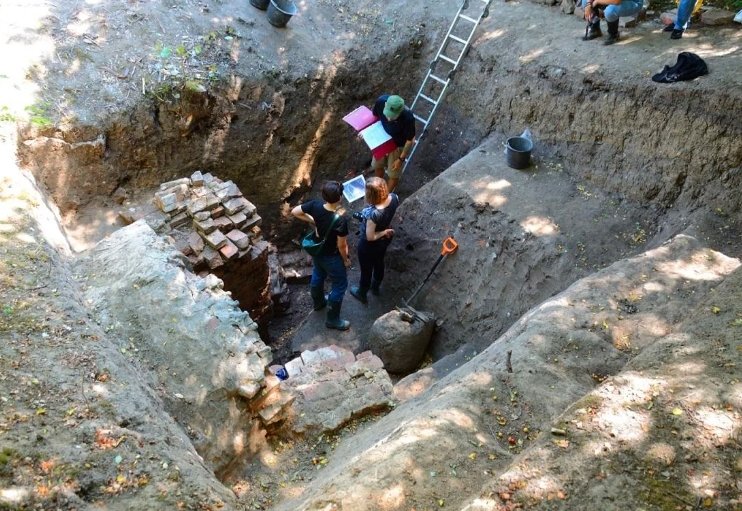Archaeologists in Warsaw have recently uncovered a mysterious tunnel system beneath Gucin Gaj, a historic park complex located in the Mokotów district. These tunnels, dating back to the 17th century, have sparked curiosity due to their potential connections to the Freemasons. The discovery has reignited interest in the history of Wilanów Palace and its association with Stanisław Kostka Potocki, a prominent Polish noble and Freemason. This article delves into the intriguing history and recent findings of these enigmatic tunnels.
The Discovery of the Tunnels
The excavation of the tunnels beneath Gucin Gaj has revealed a barrel-vaulted U-shaped structure extending over 200 feet. This discovery has led to speculation about the tunnels’ original purpose. Initial findings suggest that these tunnels may have served as meeting spots for Freemason rituals or even as catacombs. The tunnels’ proximity to Wilanów Palace and St. Catherine’s Church adds to their historical significance.
Archaeologists have found coins and relics from the 17th century, providing a broader historical context for the site. The tunnels’ construction and design hint at their use for secretive activities, possibly linked to the Freemasons. Despite the lack of contemporary sources definitively linking the tunnels to Masonic rituals, the persistent legends and the catacomb-like niches found within the tunnels have only heightened curiosity.

The recent excavation was led by the Institute of Archaeology of Cardinal Stefan Wyszyński University in collaboration with the Office of the Warsaw Conservator of Monuments. This collaborative effort has shed light on the tunnels’ historical significance and their potential connections to the Freemasons.
Stanisław Kostka Potocki and His Legacy
Stanisław Kostka Potocki, a prominent Polish noble, statesman, and ardent Freemason, played a significant role in the history of Wilanów Palace. Potocki purchased the Gucin Gaj estate in the early 19th century and developed the park complex, naming it Gucin after his grandson, August. His deep involvement in Freemasonry, eventually rising to the rank of Grand Master of the Grand National Orient of Poland, added an element of intrigue to the estate.
Potocki’s political career included pivotal roles such as the President of the Council of State in the Duchy of Warsaw and Minister of Religious Denominations and Public Education. His commitment to social reform and education was closely aligned with his Masonic ideals. Potocki’s advocacy for Enlightenment values like reason and tolerance positioned him in opposition to conservative forces, particularly the Catholic Church.
The tunnels beneath Gucin Gaj, referred to in Poland’s official register of monuments as the “Masonic graves,” have fueled rumors that they served as secret meeting places for Freemason ceremonies. Potocki’s involvement in Freemasonry and his development of the Gucin Gaj estate have made the site a focal point for both historical and archaeological research.
The Historical Significance of the Tunnels
The tunnels’ historical significance extends beyond their potential connections to the Freemasons. Records from Augustyn Locci, the court architect of King Jan III Sobieski, describe the construction of a water intake and icehouse on the northern slope of Góra Służewska, in the vicinity of Gucin Gaj. This suggests that the tunnels may have originally been part of a water cistern or icehouse constructed to supply the nearby Wilanów Palace.
The recent excavation has uncovered 19th-century walls marking the entrance from Potocki’s time, along with earlier brick-built structures dating back to the 17th century. These findings provide valuable insights into the tunnels’ construction and use over the centuries. The discovery of coins and relics from the early Middle Ages further establishes a broader historical timeline for the site.
The tunnels’ association with the Freemasons and their historical significance have made them a subject of fascination for historians and archaeologists alike. The ongoing research and excavations continue to uncover new details about the tunnels’ past, shedding light on their mysterious origins and uses.













